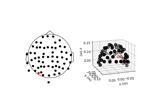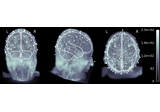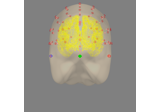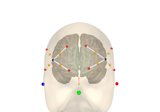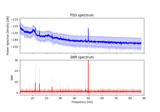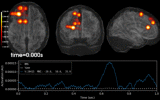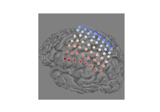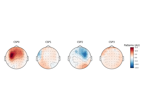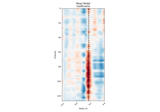mne.channels.DigMontage¶
- class mne.channels.DigMontage(dev_head_t=None, dig=None, ch_names=None)[source]¶
Montage for digitized electrode and headshape position data.
Warning
Montages are typically created using one of the helper functions in the
See Alsosection below instead of instantiating this class directly.- Parameters
See also
Notes
New in version 0.9.0.
Methods
__add__(other)Add two DigMontages.
__hash__(/)Return hash(self).
add_estimated_fiducials(subject[, …])Estimate fiducials based on FreeSurfer
fsaveragesubject.copy()Copy the DigMontage object.
Get all channel and fiducial positions.
plot([scale_factor, show_names, kind, show, …])Plot a montage.
rename_channels(mapping[, allow_duplicates])Rename the channels.
save(fname)Save digitization points to FIF.
- add_estimated_fiducials(subject, subjects_dir=None, verbose=None)[source]¶
Estimate fiducials based on FreeSurfer
fsaveragesubject.This takes a montage with the
mricoordinate frame, corresponding to the FreeSurfer RAS (xyz in the volume) T1w image of the specific subject. It will callmne.coreg.get_mni_fiducials()to estimate LPA, RPA and Nasion fiducial points.- Parameters
- subject
str The FreeSurfer subject name.
- subjects_dir
str|None The path to the FreeSurfer subjects reconstructions. It corresponds to FreeSurfer environment variable
SUBJECTS_DIR.- verbosebool,
str,int, orNone If not None, override default verbose level (see
mne.verbose()and Logging documentation for more). If used, it should be passed as a keyword-argument only.
- subject
- Returns
- instinstance of
DigMontage The instance, modified in-place.
- instinstance of
Notes
Since MNE uses the FIF data structure, it relies on the
headcoordinate frame. Any coordinate frame can be transformed toheadif the fiducials (i.e. LPA, RPA and Nasion) are defined. One can use this function to estimate those fiducials and then usemontage.get_native_head_t()to get the head <-> MRI transform.
- copy()[source]¶
Copy the DigMontage object.
- Returns
- diginstance of
DigMontage The copied DigMontage instance.
- diginstance of
- get_positions()[source]¶
Get all channel and fiducial positions.
- Returns
- positions
dict A dictionary of the positions for channels (
ch_pos), coordinate frame (coord_frame), nasion (nasion), left preauricular point (lpa), right preauricular point (rpa), Head Shape Polhemus (hsp), and Head Position Indicator(hpi). E.g.:{ 'ch_pos': {'EEG061': [0, 0, 0]}, 'nasion': [0, 0, 1], 'coord_frame': 'mni_tal', 'lpa': [0, 1, 0], 'rpa': [1, 0, 0], 'hsp': None, 'hpi': None }
- positions
Examples using
get_positions:
- plot(scale_factor=20, show_names=True, kind='topomap', show=True, sphere=None, verbose=None)[source]¶
Plot a montage.
- Parameters
- scale_factor
float Determines the size of the points.
- show_namesbool
Whether to show the channel names.
- kind
str Whether to plot the montage as ‘3d’ or ‘topomap’ (default).
- showbool
Show figure if True.
- sphere
float| array_like |str|None The sphere parameters to use for the cartoon head. Can be array-like of shape (4,) to give the X/Y/Z origin and radius in meters, or a single float to give the radius (origin assumed 0, 0, 0). Can also be a spherical ConductorModel, which will use the origin and radius. Can be “auto” to use a digitization-based fit. Can also be None (default) to use ‘auto’ when enough extra digitization points are available, and 0.095 otherwise. Currently the head radius does not affect plotting.
New in version 0.20.
- verbosebool,
str,int, orNone If not None, override default verbose level (see
mne.verbose()and Logging documentation for more). If used, it should be passed as a keyword-argument only.
- scale_factor
- Returns
- figinstance of
matplotlib.figure.Figure The figure object.
- figinstance of
Examples using
plot:
- rename_channels(mapping, allow_duplicates=False)[source]¶
Rename the channels.
- Parameters
- mapping
dict|callable() A dictionary mapping the old channel to a new channel name e.g. {‘EEG061’ : ‘EEG161’}. Can also be a callable function that takes and returns a string.
Changed in version 0.10.0: Support for a callable function.
- allow_duplicatesbool
If True (default False), allow duplicates, which will automatically be renamed with
-Nat the end.New in version 0.22.0.
- mapping
- Returns
- instinstance of
DigMontage The instance. Operates in-place.
- instinstance of
Examples using
rename_channels:

